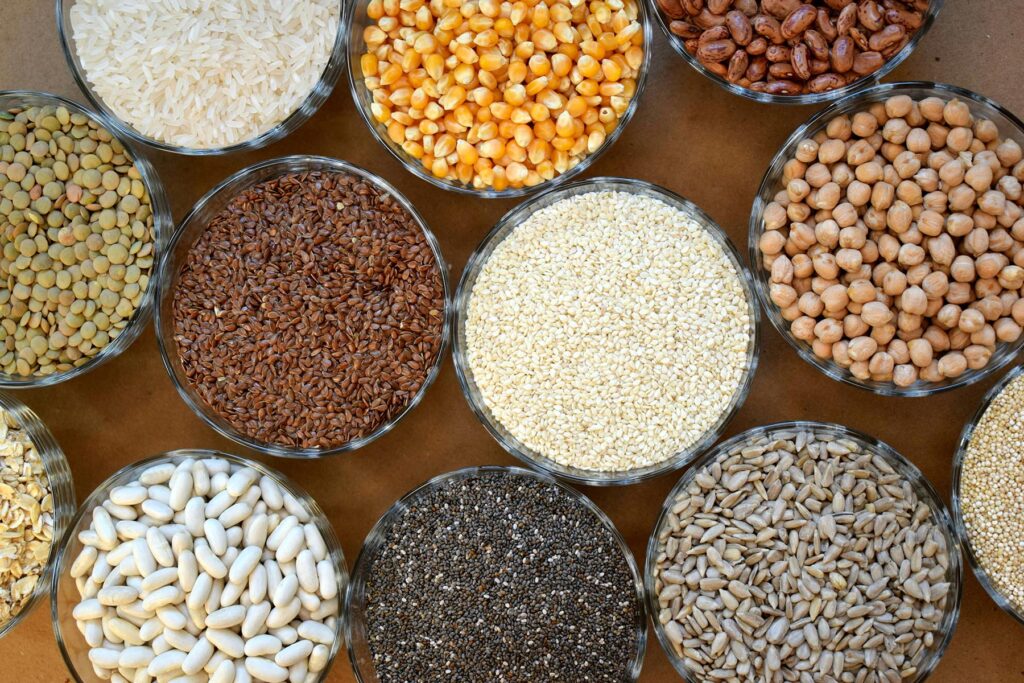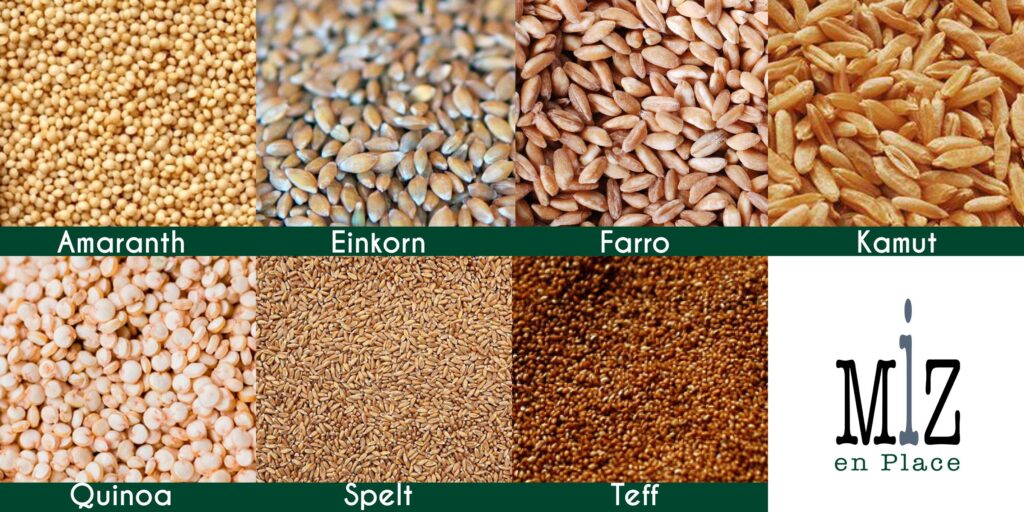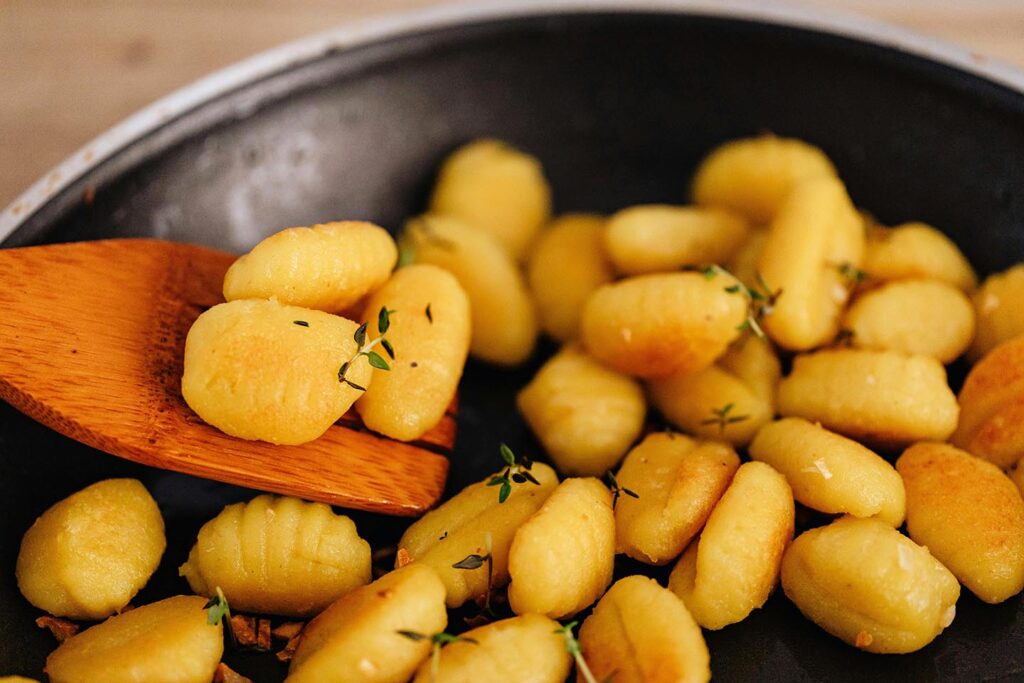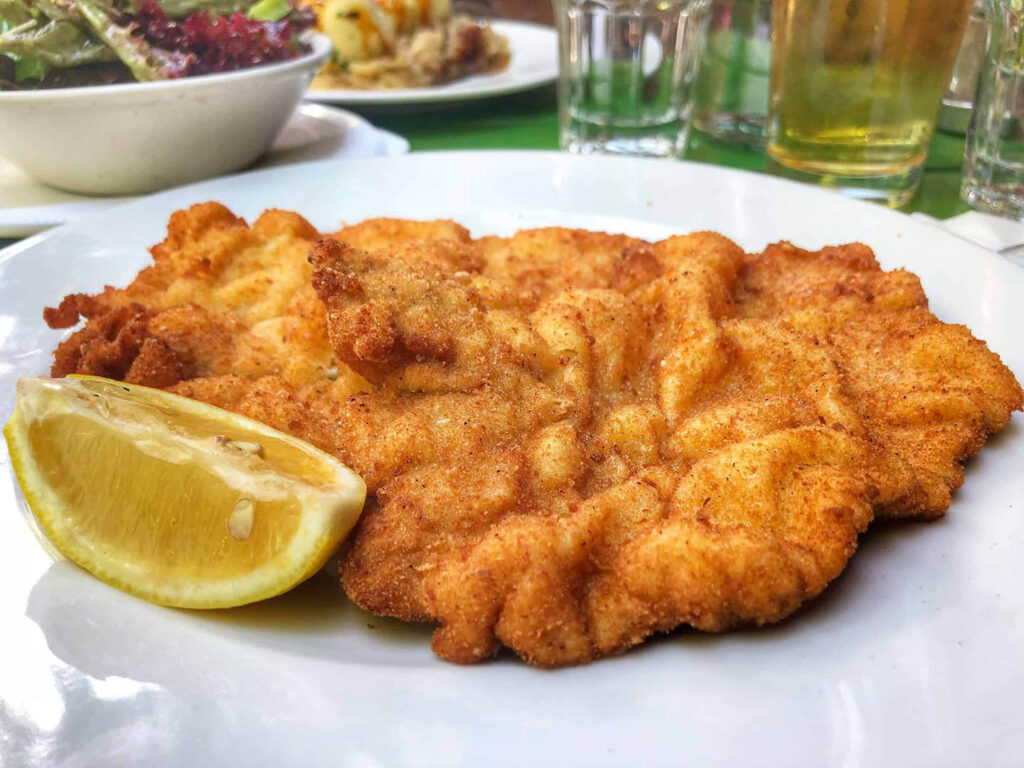
Ancient grains are a category of grains that have been cultivated for thousands of years and have remained essentially unchanged by modern agricultural practices. They are often considered “ancient” because they have been grown and consumed for centuries, long before the advent of modern, high-yield grain crops like wheat, corn, and rice.
Some common ancient grains include (but are not limited to):

- Amaranth: Amaranth was a staple in the diets of the Aztec and Inca civilizations. It’s a highly nutritious grain that is also gluten-free. It is typically nutty, herbal, and slightly peppery in flavor with a crunchy texture, similar to that of quinoa.
- Einkorn: Einkorn is one of the earliest cultivated forms of wheat, dating back thousands of years. It contains less gluten than modern wheat varieties. The flavor is similar to commercial wheat with a few nutty and toasty notes.
- Farro: Farro is an ancient wheat grain cultivated in the Mediterranean region for thousands of years. It has a nutty flavor and a chewy texture.
- Kamut: Kamut is another ancient wheat variety originating in the Middle East. It’s often used in pasta, bread, and cereal products. The flavor is similar to commercial wheat with notes of roasted nuts.
- Quinoa: Native to South America, quinoa has been cultivated for over 5,000 years. It is known for its high protein content and is naturally gluten-free. Quinoa has a crunchy texture and nutty flavor.
- Spelt: Spelt is an ancient relative of modern wheat and was widely grown in Europe during the Middle Ages. It’s known for its nutty flavor and can be a good alternative for those with mild wheat sensitivities.
- Teff: Teff is native to Ethiopia and Eritrea and is the world’s smallest grain. It is used to make traditional Ethiopian flatbreads called injera. Teff is very earthy and nutty in flavor, often described as similar to hazelnuts with hints of coffee and molasses.
Are ancient grains healthy to eat?
A well-rounded, balanced diet that includes a variety of foods is essential for overall health. Incorporating ancient grains into your diet can offer several health benefits, making them attractive for those seeking diverse and nutritious alternatives to modern grains. The combination of healthy protein, fiber, and complex carbohydrates in ancient grains can contribute to better overall health, plus a feeling of fullness and sustained energy, which may help with weight management.
Some of the health benefits associated with consuming ancient grains include (but are not limited to):
- Good Sources of Dietary Fiber: Ancient grains often contain more dietary fiber, which can support digestive health and help regulate blood sugar levels.
- Nutrient Dense: Ancient grains are often more nutrient-dense compared to modern grains. They typically contain higher levels of essential nutrients, including vitamins, minerals, and antioxidants. For example, quinoa is rich in protein, fiber, and vitamins and minerals.
- Higher Protein Content: Many ancient grains are notably higher in protein than modern wheat, rice, and corn. This can particularly benefit vegetarians and vegans looking to increase their protein intake. Amaranth and quinoa are examples of high-protein ancient grains.
- Lower Gluten Content: Some ancient grains, like einkorn and kamut, contain less gluten or a different type of gluten than modern wheat varieties. This can make them a more digestible and tolerable option for individuals with mild wheat sensitivities.
- Rich in Antioxidants: Many ancient grains are rich in antioxidants, which can help combat oxidative stress and inflammation in the body. For instance, teff and amaranth are known for their antioxidant content.
- Vitamins and Minerals: Ancient grains often provide a wide range of vitamins and minerals, such as magnesium, iron, B vitamins, and zinc. These nutrients are essential for overall health and well-being.
What are some of the best ways to enjoy ancient grains?
Enjoying ancient grains can be a flavorful and nutritious experience. Some of the best ways to incorporate these ancient grains into your meals include using them as a base for salads, stir-fries, or grain bowls. You can also cook them as a side dish or main course. For example, with its nutty flavor, quinoa is versatile and can be paired with various ingredients, such as vegetables, herbs, and proteins. Spelt and farro, with their chewy texture, make excellent additions to soups and stews, providing depth and heartiness. Baking with ancient grains, like amaranth or teff flour in bread or muffin recipes, can add a unique twist to your baked goods while increasing their nutritional value. Additionally, experimenting with ancient grain porridge or pudding recipes can introduce variety into your breakfast routine. These grains enhance the taste and texture of your meals and offer an array of health benefits, making them a valuable addition to a well-rounded diet.
Ancient grains have always been available but have recently gained popularity due to their perceived health benefits and unique flavors. They are often considered more nutritious than some modern grains and are valued for their potential health advantages, such as higher protein content, different types of fiber, and a variety of vitamins and minerals. Additionally, some people with gluten sensitivities may find ancient grains more easily digestible or less problematic than modern wheat.
Keep in mind that individual nutritional needs and tolerances can vary, so it’s important to consider your specific dietary requirements and consult with a healthcare professional or registered dietitian when making significant changes to your diet.
What are your favorite ancient grains? How do you like them prepared or paired with? Let us know in the comments!



